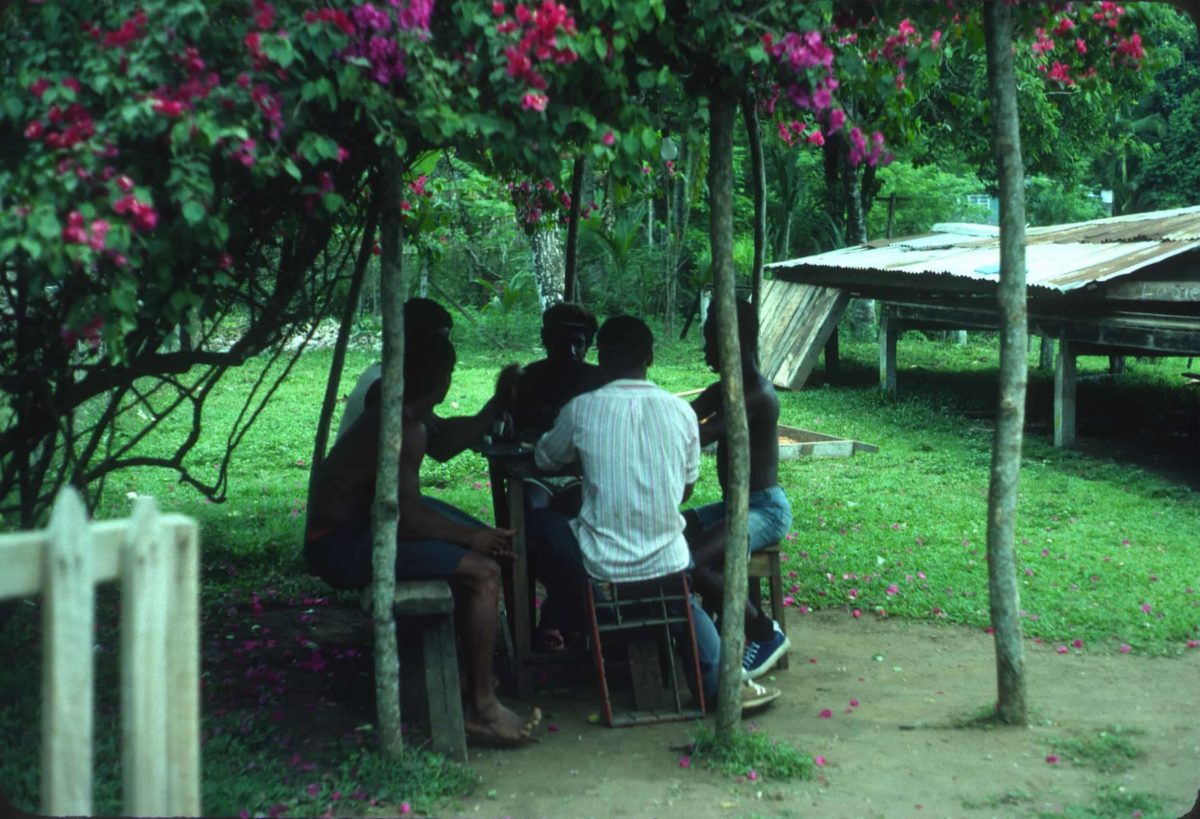They sometimes call it Mekatelyou, which means, Let me tell you. It’s what the black folks in the Caribbean province of Limón speak. Some claim it’s a dialect, and some say it’s a language. If you don’t know the difference, don’t feel bad. The linguists are still trying to work it out. Many of them claim that a dialect is a variation of a language and can be understood by a speaker of the mother language or a person speaking another dialect of the mother tongue. In contrast, languages are so different from one another that they cannot be understood from one to the other.
Sorry, I’m afraid that doesn’t work very well for me. I know, for instance, that a Northern Italian and a Sicilian speaking their respective dialects cannot understand each other. On the other hand, having learned Spanish, I can generally follow a Portuguese speaker. Some go so far as to claim that it is the relative political power of the speakers of a language or dialect that determines its status. That makes sense. It’s just about how everything else is determined in this world of ours.
Then, of course, there is accent, which really confuses the whole issue. I once spent a good 20 minutes in a British museum while a Scottish guard chatted away at me. I just kept smiling and nodding my head, for I understood not a single word he uttered. Had I had a written transcript of what the Scottish guard was saying, I’m sure I would have understood him, despite dialectical differences.
Which leads us back to the English the black people (as they call themselves) speak in Limón. Technically, what they speak is called Creole, a term originally applied to people born in the colonies to distinguish them from the upper-class European-born immigrants. However, linguists now use the term Creole language for any language that is formed from two or more other languages.
Call it what you will: language, dialect, patois, argot, pidgin, Creole. The question is what is it, and from where did it come? To understand how Limón Creole came about, it is necessary to go back to the beginning, all the way back to the slaves newly arrived from Africa.
Imagine for a moment that you have been captured by aliens and taken to their planet to be a slave. There, you are thrown together with a lot of others from different countries and planets, all speaking different languages. Your captors speak to you only to give orders or scold you.
To get along at all, you must learn to communicate with both the aliens and your fellow captives. There are no grammar books, no alien-as-a-second-language classes, so you do the best you can.
You find common ground and mix several languages together in a rudimentary form. You don’t bother with verb tenses or other parts of speech that change, and you don t pronounce sounds you can’t hear or ones that don’t exist in your language. You create a so-called pidgin language. Me, Tarzan; you, Jane.
That s what it was like for the first slaves dumped out on the docks of the New World. In order to survive, they got together some basic vocabulary and strung together some uncomplicated sentences. In time, usually within one generation, the pidgin developed into a full-blown dialect or language, possessing its own valid grammar and vocabulary.
Last century in Limón, it was primarily the descendants of Jamaican slaves who came to the Atlantic coast of Costa Rica to help build the railroad and to work for the United Fruit Company (often called Mama Yunai by natives).
Actually, two distinct groups arrived: those who had been slaves under the Spanish and those who had been slaves under the English. Apparently, the two groups were at odds with each other, the English group considering themselves British citizens and, therefore, above the Spanish group. Because the Spaniards generally did not bring their women with them to the colonies, the Spanish group of ex-slaves had been better integrated and therefore spoke Spanish.
Only the English group spoke Creole. The Jamaican blacks were successful, so they stayed. Here, successful means simply that they were able to survive. Nearly every other group who came to work died of malaria. The blacks, having sickle cell anemia, couldn t contract it, so they became the dominant group.
Here are some examples of the Creole you might hear (but probably not understand) in the streets of Limón. With exceptions, I have transcribed them as they would be separated and spelled in Standard English, not at all how they might be spelled by natives of Limón:
- Wha happen? (What happened?) Aw rai (All right)
- You welcome. (You re welcome.) Les gwout. (Let s go out.)
- I m born and growin in Limón. (I was born and raised in Limón.) Les go market. (Let s go shopping.)
- You can cum n look for me. (Come and see me sometime.) I broke but I glad. (I m poor, but I m happy.)
- I come to San José maybe what I was 22, 23 years. (I came to San José when I was about 22 or 23.)
- You like speak old people. (You might want to talk to the old people.) Les go town. (Let s go downtown.)
- Black people mudder langage is English. (Black people s mother tongue is English.) I want to use word what I normally use. (I m going to use my usual vocabulary.)
- Come on to beach. (Come to the beach.) What you doin tonai? (What are you doing tonight?)
So, if you’re having a rough go of it with Spanish, maybe you need to get yourself on over to Limón and give Mekatelyou a try.
Just don t make the mistake of thinking it s going to be easy.






